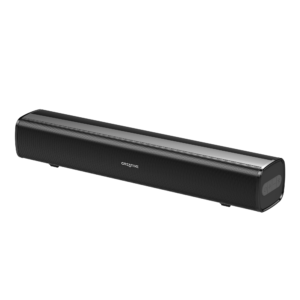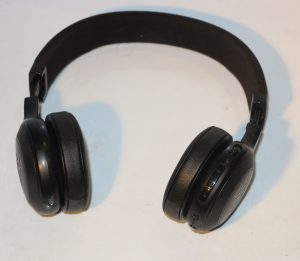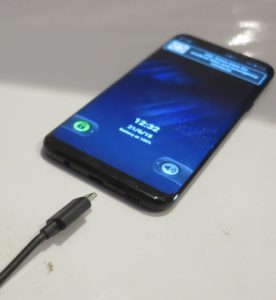Article

The Bluetooth connectivity that the Creative Labs Stage Air desktop soundbar benefits from will be improved in an evolutionary way
The future of Bluetooth audio: Major changes coming later this year | Android Authority
My Comments
One of Bluetooth’s killer applications, especially for smartphones and tablets, is a wireless link between a headset, speaker or sound system to reproduce audio content held on the host computing device.
At the moment, the high-end for this use case is being fought strongly by some very determined companies. Firstly, Bose, Sony and Bang & Olufsen are competing with each other for the best active-noise-cancelling over-the-ear Bluetooth headset that you can use while travelling. This is while Apple and Sony are vying for top place when it comes to the “true-wireless” in-ear Bluetooth headset. It is showing that the Bluetooth wireless-audio feature is infact part of a desirable feature set for headphones intended to be used with smartphones, tablets or laptops.
Let’s not forget that recently-built cars and recently-made aftermarket car-stereo head units are equipped with Bluetooth for communications and multimedia audio content. This is part of assuring drivers can concentrate on the road while they are driving.

.. just like headsets like this JBL one
But this technology is to evolve over the second half of 2019 with products based on the improved technology expected to appear realistically by mid 2020. Like with Bluetooth Low Energy and similar technologies, the host and accessory devices will be dual-mode devices that support current-generation and next-generation Bluetooth Audio. This will lead to backward compatibility and “best-case” operation for both classes of device.
There is an expectation that they will be offered at a price premium for early adopters but the provision of a single chipset for both modes could lead towards more affordable devices. A question that can easily be raised is whether the improvements offered by next-generation Bluetooth audio can be provided to current-generation Bluetooth hosts or accessory devices through a software upgrade especially where a software-defined architecture is in place.
What will it offer?

… like with the upcoming generation of smartphones
The first major feature to be offered by next-generation Bluetooth audio technology is a Bluetooth-designed high-quality audio codec to repackage the audio content for transmission between the host and accessory.
This is intended to replace the need for a smartphone or headset to implement third-party audio codecs like aptX or LDAC if the goal is to assure sound quality that is CD-grade or better. It means that the device designers don’t need to end up licensing these codecs from third parties which will lead to higher-quality products at affordable prices along with removing the balkanisation associated with implementing the different codecs at source and endpoint.
A question that will be raised is what will be the maximum audio quality standard available to the new codec – whether this will be CD-quality sound working up to 16-bit 48kHz sampling rate or master-quality sound working up to 24-bit 192kHz sampling rate. Similarly, could these technologies be implemented in communications audio especially where wide-bandwidth FM-grade audio is being added to voice and video communications technologies for better voice quality and intelligibility thanks to wider bandwidth being available for this purpose.
Another key improvement that will be expected is reduced latency to a point where it isn’t noticeable. This will appeal to the gaming headset market where latency is important because sound effects within games are very important as audio cues for what is happening in a game. It may also be of benefit if you are making or taking videocalls and use your Bluetooth headset to converse with the caller. Here, it will open up the market for Bluetooth-based wireless gaming headsets.
It will also open up Bluetooth audio towards the “many-endpoint” sound-reproduction applications where multiple endpoints like headsets or speakers receive the same audio stream from the same audio source. In these use cases, you can’t have any endpoint receiving the program material reproducing the material later than others receiving the same material.
A key application that will come about is to implement Bluetooth in a multiple-channel speaker setup including a surround-sound setup. This will be a very critical application due to the requirement to reproduce each channel of the audio content stream concurrently and in phase.
It will also legitimise Bluetooth as an alternative wireless link to Wi-Fi wireless networks for multiroom audio setups. As well, the support for “many-endpoint” sound-reproduction will appeal to headsets and hearing-aid applications where there is the desire to send content to many of these devices using a high-quality wireless digital approach rather than RF or induction-loop setups that may be limited in sound quality (in the case of induction-loop setups) or device compatibility (in the case of RF setups). There could even be the ability to support multiple audio-content channels in this setup such as supporting alternative languages or audio description. In some cases, it may open up a use case where transport announcements heard in an airport or rail station can “punch through” over music, video or game sound-effects heard over a Bluetooth headset in a similar way to European car radios can be set up to allow traffic bulletins to override other audio sources.
A question that can be raised with the “many-endpoint” approach that this next-generation Bluetooth-audio technology is to support is whether this can support different connection topologies. This includes “daisy-chaining” speakers so that they are paired to each other for, perhaps a multi-channel setup; using a “hub-and-spoke” approach with multiple headsets or speakers connected to the same source endpoint; or a combination of both topologies including exploiting mesh abilities being introduced to Bluetooth.
Conclusion
From next year, as the newer generations of smartphones, laptops, headsets and other Bluetooth-audio-capable equipment are released, there will be a gradual improvement in the quality and utility of these devices’ audio functions.

Major improvements expected to come to Bluetooth audio
Article
The Bluetooth connectivity that the Creative Labs Stage Air desktop soundbar benefits from will be improved in an evolutionary way
The future of Bluetooth audio: Major changes coming later this year | Android Authority
My Comments
One of Bluetooth’s killer applications, especially for smartphones and tablets, is a wireless link between a headset, speaker or sound system to reproduce audio content held on the host computing device.
At the moment, the high-end for this use case is being fought strongly by some very determined companies. Firstly, Bose, Sony and Bang & Olufsen are competing with each other for the best active-noise-cancelling over-the-ear Bluetooth headset that you can use while travelling. This is while Apple and Sony are vying for top place when it comes to the “true-wireless” in-ear Bluetooth headset. It is showing that the Bluetooth wireless-audio feature is infact part of a desirable feature set for headphones intended to be used with smartphones, tablets or laptops.
Let’s not forget that recently-built cars and recently-made aftermarket car-stereo head units are equipped with Bluetooth for communications and multimedia audio content. This is part of assuring drivers can concentrate on the road while they are driving.
.. just like headsets like this JBL one
But this technology is to evolve over the second half of 2019 with products based on the improved technology expected to appear realistically by mid 2020. Like with Bluetooth Low Energy and similar technologies, the host and accessory devices will be dual-mode devices that support current-generation and next-generation Bluetooth Audio. This will lead to backward compatibility and “best-case” operation for both classes of device.
There is an expectation that they will be offered at a price premium for early adopters but the provision of a single chipset for both modes could lead towards more affordable devices. A question that can easily be raised is whether the improvements offered by next-generation Bluetooth audio can be provided to current-generation Bluetooth hosts or accessory devices through a software upgrade especially where a software-defined architecture is in place.
What will it offer?
… like with the upcoming generation of smartphones
The first major feature to be offered by next-generation Bluetooth audio technology is a Bluetooth-designed high-quality audio codec to repackage the audio content for transmission between the host and accessory.
This is intended to replace the need for a smartphone or headset to implement third-party audio codecs like aptX or LDAC if the goal is to assure sound quality that is CD-grade or better. It means that the device designers don’t need to end up licensing these codecs from third parties which will lead to higher-quality products at affordable prices along with removing the balkanisation associated with implementing the different codecs at source and endpoint.
A question that will be raised is what will be the maximum audio quality standard available to the new codec – whether this will be CD-quality sound working up to 16-bit 48kHz sampling rate or master-quality sound working up to 24-bit 192kHz sampling rate. Similarly, could these technologies be implemented in communications audio especially where wide-bandwidth FM-grade audio is being added to voice and video communications technologies for better voice quality and intelligibility thanks to wider bandwidth being available for this purpose.
Another key improvement that will be expected is reduced latency to a point where it isn’t noticeable. This will appeal to the gaming headset market where latency is important because sound effects within games are very important as audio cues for what is happening in a game. It may also be of benefit if you are making or taking videocalls and use your Bluetooth headset to converse with the caller. Here, it will open up the market for Bluetooth-based wireless gaming headsets.
It will also open up Bluetooth audio towards the “many-endpoint” sound-reproduction applications where multiple endpoints like headsets or speakers receive the same audio stream from the same audio source. In these use cases, you can’t have any endpoint receiving the program material reproducing the material later than others receiving the same material.
A key application that will come about is to implement Bluetooth in a multiple-channel speaker setup including a surround-sound setup. This will be a very critical application due to the requirement to reproduce each channel of the audio content stream concurrently and in phase.
It will also legitimise Bluetooth as an alternative wireless link to Wi-Fi wireless networks for multiroom audio setups. As well, the support for “many-endpoint” sound-reproduction will appeal to headsets and hearing-aid applications where there is the desire to send content to many of these devices using a high-quality wireless digital approach rather than RF or induction-loop setups that may be limited in sound quality (in the case of induction-loop setups) or device compatibility (in the case of RF setups). There could even be the ability to support multiple audio-content channels in this setup such as supporting alternative languages or audio description. In some cases, it may open up a use case where transport announcements heard in an airport or rail station can “punch through” over music, video or game sound-effects heard over a Bluetooth headset in a similar way to European car radios can be set up to allow traffic bulletins to override other audio sources.
A question that can be raised with the “many-endpoint” approach that this next-generation Bluetooth-audio technology is to support is whether this can support different connection topologies. This includes “daisy-chaining” speakers so that they are paired to each other for, perhaps a multi-channel setup; using a “hub-and-spoke” approach with multiple headsets or speakers connected to the same source endpoint; or a combination of both topologies including exploiting mesh abilities being introduced to Bluetooth.
Conclusion
From next year, as the newer generations of smartphones, laptops, headsets and other Bluetooth-audio-capable equipment are released, there will be a gradual improvement in the quality and utility of these devices’ audio functions.
Related Posts
Western Digital’s latest NAS more as a personal cloud storage
Asus’s latest USB laptop expansion module satisfies current expectations
Netgem proposes to integrate the set-top box and soundbar in one unit
About The Author
simonmackay